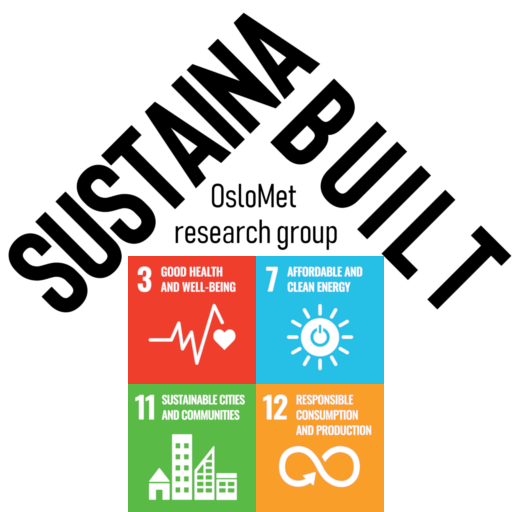Faculty Dissemination (Professional and Public Outreach)
2016 ▲▼
Tor Arvid VIK, Habtamu B. MADESSA, Petter ASLAKSRUD, Eirik FOLKEDAL, Ottar S. ØVREVIK (2016) “Thermal Performance of an Office Cubicle Integrated with a Bio-based PCM: Experimental Analyses”🔓. Lecture at 8th International Conference on Sustainability in Energy and Buildings, SEB-16, 11-13 September 2016, Turin, Italy, 2016-09-11 …
Abstract: Phase change materials (PCM) have the potential to enhance the energy performance and thermal comfort of buildings. The main purpose of this work is to investigate the thermal performance and indoor climate benefits of bio-PCM integrated in an office cubicle. The study is based on experimental work, where air temperature of the 15 m2 test room, as well as the surface temperature of the PCM and the walls, floor and ceiling were recorded. Different scenarios were considered, including PCM used as a suspended ceiling without supporting ceiling plates, as well as PCM covered with ceiling plates. The preliminary result shows that a significant cooling effect could be achieved when using 17 m2 of uncovered PCM directly exposed to the occupied zone. The PCM could therefore, to a certain extent, reduce the need of mechanical cooling and thus save costs for installation, energy use and maintenance.
Permalink: https://doi.org/10.1016/j.egypro.2017.03.223
Anders Benteson NYGAARD (2016) “Indoor Air Quality: Microbial Communities in Kindergartens”. Lecture at Swedish Bioinformatics Workshop in Linkøping, 2016-10-20 …
Abstract: Recent developments in DNA sequencing techniques has had a large impact on our understanding of microbial communities. Methods based on sequencing of 16S rRNA genes can, when combined with next generation DNA-sequencing (NGS) techniques, enable the identification of thousands of different bacteria within a single sample. NGS data can be analyzed using bioinformatic analysis tools, such as Quantitative Insights Into Microbial Ecology (QIIME), a pipeline that is often used for such data. This enables a comprehensive mapping of the bacteria that inhabit and surround us. It is now clear that there is an intricate interaction of bacteria between our environments and us. These tools have also been applied to the study of indoor environments, to better understand how the built microbiome can influence human health. We used NGS along with QIIME to analyze 16S gene amplicons to study microbial diversity in kindergartens. In our first study we investigated how bacteria are retained and possibly dispersed from HVAC filters. HVAC systems are important for maintaining a healthy indoor climate and good air quality. In a follow up study we analyzed the microbial diversity in one kindergarten during the course of one year to investigate how microbial communities develop over time. The majority of bacteria surrounding us pose no direct detrimental health risk. However, bacterial species commonly found on humans, such as Staphylococcus spp., may become concentrated in the indoor space. In addition, the nature of our early exposure to microbes may be significant in the later development of immunological conditions. Research show that we are surrounded by far more complex bacterial communities than what earlier research has shown and that there is an intricate interplay of bacteria between our buildings and ourselves. DNA sequencing used with bioinformatic analysis tools opens up a range of opportunities for bettering our understanding of what constitutes healthy built environments.
Anders Benteson NYGAARD, Colin CHARNOCK (2016) “Environmental bacterial antibiotic resistance genes in floor dust in a Norwegian kindergarten”🔓. Poster at Indoor Air 2016 in Ghent, 2016-07-03 …
Abstract: The study investigates if antibiotic-resistance genes (ARGs) could be detected in floor dust in a Norwegian kindergarten using a polymerase chain reaction (PCR)-based approach. ARGs were found in samples from most of the rooms even though the kindergarten had only recently opened. This paper shows that a variety of ARGs quickly appear in kindergarten floor dust and that these can be efficiently detected by the approach described.
